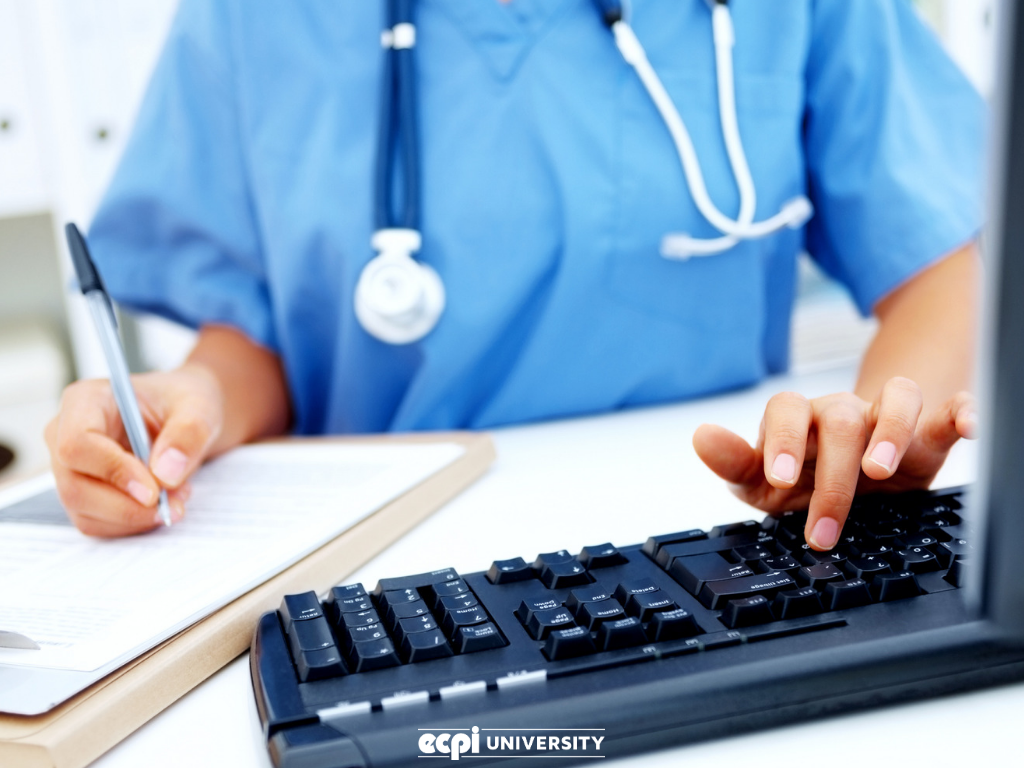Understanding the Trick Duties and Obligations in Medical Administration
Understanding the Trick Duties and Obligations in Medical Administration
Blog Article
Innovations in Medical Administration: Just How Modern Technology Is Reshaping Healthcare Administration
The landscape of healthcare administration is going through an extensive improvement, driven by technical innovations in medical administration. Electronic Health And Wellness Records (EHR) have ended up being the foundation of reliable client information administration, while telemedicine bridges ranges, making health care accessible to even the most remote places. Artificial knowledge is not just a futuristic principle yet a contemporary tool that personalizes client treatment and streamlines administrative tasks. As these advancements take spotlight, a crucial concern arises: exactly how will these modern technologies additionally redefine the health care experience for both providers and clients in the coming years?
Evolution of Electronic Health Records
Over the past few years, the advancement of digital health records (EHRs) has dramatically transformed the landscape of clinical management. At first designed to digitize individual records, EHRs have actually broadened beyond their initial scope to become integral devices in improving health care processes, enhancing person care, and improving management effectiveness. The shift from paper-based systems to EHRs has minimized redundancies, minimized mistakes, and facilitated smooth details sharing throughout different doctor, thus enabling detailed and collaborated patient treatment.
EHRs have presented a paradigm shift in medical care monitoring by incorporating scientific, administrative, and monetary information, thus enabling more educated decision-making. The ease of access of real-time patient information equips healthcare specialists to make timely analysis and treatment decisions, even more improving patient end results. EHRs support the application of evidence-based practices by giving access to the latest medical research and treatment standards directly within the scientific process.
The government rewards and laws have accelerated EHR adoption, making certain conformity with requirements that secure client privacy and information security. As the medical care sector proceeds to welcome electronic makeover, EHRs remain at the forefront of technology, driving efficiency and boosting the total high quality of medical care distribution.
Innovations in Telemedicine
Telemedicine has actually rapidly advanced recently, essentially changing the means health care services are supplied. This transformation is mainly associated to technological innovations that have actually broadened accessibility to medical care, specifically for people in remote or underserved locations. Telemedicine systems facilitate real-time examinations between clients and healthcare companies, consequently reducing the demand for in-person check outs and significantly lowering delay times.
The integration of video clip conferencing, mobile health applications, and remote monitoring devices has actually boosted the extent of telemedicine. Clients can currently take care of chronic conditions with continuous surveillance, obtain timely assessments, and access specialist treatment without geographical restrictions. This shift has not just improved client contentment but has actually also optimized health care process and resource allowance.
Moreover, telemedicine has played a vital duty in public wellness, especially during pandemics, by lessening the danger of infectious condition transmission. Regulatory innovations have further supported telemedicine's expansion, with lots of countries modifying policies to permit broader insurance policy coverage for virtual check outs.
In spite of challenges such as electronic proficiency and data safety and security, the continuous development of telemedicine promises to sustain its trajectory as a foundation of modern-day healthcare management, using an extra accessible and reliable medical care delivery design.
Expert System in Medical Care
Building on the technical innovations seen in telemedicine, expert system (AI) is swiftly becoming a transformative force in health care administration. AI modern technologies supply significant renovations in effectiveness, precision, and decision-making capacities. Among one of the most compelling applications of AI in medical care is anticipating analytics, which allows site here health care administrators to prepare for person demands, improve resource appropriation, and improve individual results. By examining large datasets, AI algorithms can identify patterns and forecast possible health dilemmas, allowing positive treatment.

An additional noteworthy application remains in personalized medicine, where AI assists in customizing treatments to individual patient accounts by examining genetic, lifestyle, and click here for more info ecological elements (medical administration). As AI continues to progress, its assimilation right into health care management assures to maximize procedures, minimize costs, and eventually improve the top quality of care given
Enhancing Data Safety Steps
In the digital age, safeguarding client details has become an essential top priority in medical management. As health care organizations significantly depend on electronic systems for handling client data, the need for robust information safety and security actions has expanded exponentially. Information violations not only jeopardize individual personal privacy but likewise lead to significant economic losses and damage to institutional track records. Consequently, the combination of innovative safety and security procedures is extremely important.
Medical care organizations are executing multi-layered safety and security frameworks to mitigate threats. File encryption technologies make sure that sensitive information stays hard to reach to unauthorized individuals, both throughout transmission and storage space. Moreover, the fostering of blockchain innovation offers an appealing method for boosting data integrity and traceability, offering an unalterable document of all deals.

Educating staff on cybersecurity finest methods is equally necessary. Understanding programs furnish medical care workers with the expertise to identify and report potential risks, such as phishing attempts. By prioritizing information safety, clinical administrations can secure person information and maintain count on.
Improving Person Interaction Solution
While robust information protection steps are fundamental in safeguarding person information, similarly vital is the enhancement of patient communication systems to make certain reliable medical care distribution. In the developing landscape of healthcare monitoring, technological advancements are playing a critical function in changing how doctor interact with clients. Efficient communication systems not just boost client satisfaction but also enhance clinical outcomes by ensuring prompt and exact details exchange.
This combination permits clients to access their clinical info securely, routine consultations, and interact with medical care companies efficiently. In addition, the use of telemedicine systems has expanded access to health care solutions, particularly for those in remote areas or with movement challenges.
In addition, synthetic intelligence-powered chatbots are being increasingly used to give instant feedbacks to patient questions, offering a seamless interaction experience. By leveraging these technical go to this website innovations, doctor can promote even more tailored patient interactions, inevitably resulting in improved individual involvement and adherence to therapy strategies.
Verdict
Telemedicine enhances medical care ease of access for remote populations, while man-made intelligence automates tasks and individualizes person involvement. Jointly, these developments drive performance, reduce expenses, and boost the high quality of medical care distribution, improving business procedures in the medical care sector.
Report this page